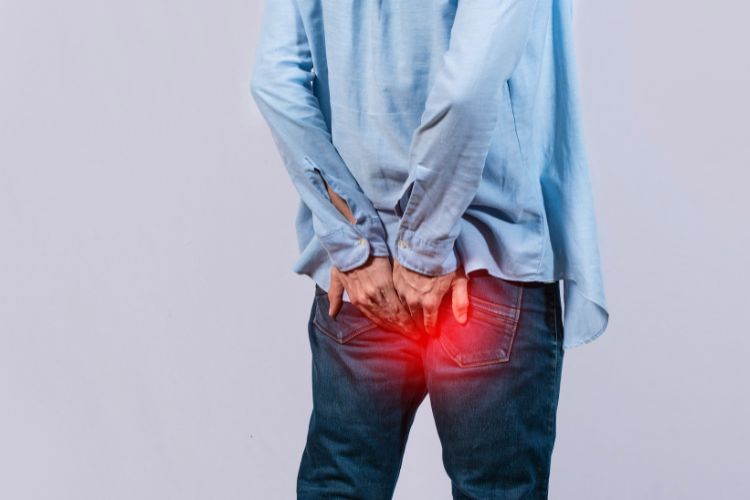Anal disorders, such as piles and fissures, can manifest with a variety of symptoms, including bloody or difficult-to-pass faeces, an itchy and irritated anal cavity, and pain during prolonged sitting. However, most individuals fail to realize that such pain or discomfort in the area is indicative of a specific illness. Despite having similar symptoms, they frequently don’t realise that piles and fissures are two different illnesses. When someone notices blood on the stool or toilet paper, for example, or feels pain or discomfort in the anus, they may assume piles.
In this blog, let’s explore the differences between piles and fissures as well as some possible remedies. To guarantee effective management and therapy, it’s critical to differentiate between these two illnesses.
What are piles?
Haemorrhoids, or piles, are a disorder affecting the anus where the veins in the terminal region of the anus enlarge. Most of the time, piles can cure on their own even before symptoms show up.
Three major categories can be used to classify piles:
- Internal Piles: Hard lumps in the rear passage of the anal passage indicate the presence of this form of haemorrhoid. Periodically, there may be pain and/or bleeding.
- External Piles: Pain and skin infections may arise when haemorrhoids develop at the outside edge of the anal area.
- Thrombosed Piles: Pain and swelling may occur when a blood clot impedes blood flow. These haemorrhoids have the potential to rupture and haemorrhage.
The following are some symptoms of piles:
- Bleeding after faeces are passed
- Passing bloody stools
- Pain, itching, or swelling in the anal area
- Stool leakage; and/or lump or swelling inside the anal cavity
Stages of piles
- First-degree haemorrhoids do not prolapse; instead, they bleed in the early stages.
- Second-degree haemorrhoids prolapse but swiftly revert to their initial form.
- Third-degree, where prolapse occurs but can be reduced with surgery.
- Fourth-degree, in which the prolapse is irreversible and cannot be retracted.
Causes of Piles
Pile formation is a result of long-term constipation and difficulties passing stool. More factors might cause piles. Among them are the following:
- Heavily lifting weights
- Straining while passing stool
- Chronic diarrhoea
- Pregnancy
What are Fissures?
Fissures are tears in the wet tissue of the anal area that lead to unpleasant spasms and itching. Anus fissures and piles vary primarily in that, in contrast to piles, anal discomfort may be experienced from the onset of the condition. Depending on how severe the problem is, fissures can be divided into two categories:
- Acute fissures: These are new fissures that may readily heal on their own or be treated at home with medicine.
- Chronic fissures: Medical intervention is necessary for the treatment of fissures that continue longer than eight to twelve weeks. In addition, a skin tag and an additional tissue development known as hypertrophied papillae are developed in chronic fissures.
What Can Cause Anal Fissures?
There are several possible causes of anal tears that result in anal fissures, some of them are as follows:
- Constant diarrhoea
- Exerting significant effort while passing large or firm stools
- Childbirth
Treatment for piles and fissures
Laser therapy for piles is the most recommended alternative among the various successful treatment techniques that medical research has developed.
For those who are looking for relief from the pain and discomfort related to piles, anal fissures, and related conditions, laser therapy is a very effective option. This innovative technique has transformed the treatment of haemorrhoids due to its minimally invasive nature and quick recovery.
Stapler surgery involves using sutures to lift the tissue from the pile into a ring of tissues, then removing the tissue using a stapler to stop the tissue’s blood supply. Therefore, compared to patients who have traditional piles surgery, individuals who have stapler surgery usually feel less discomfort.
Conclusion
It is highly recommended that you get in touch with us if you or a loved one is having trouble with piles. We help patients take back control of their life and health by offering a customised and comprehensive strategy that ensures their comfort and well-being. It’s important to keep in mind that many conditions are readily managed with little to no surgical intervention. Therefore, don’t hesitate to seek assistance. For further details, watch the video.

